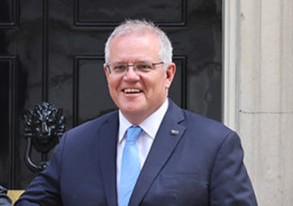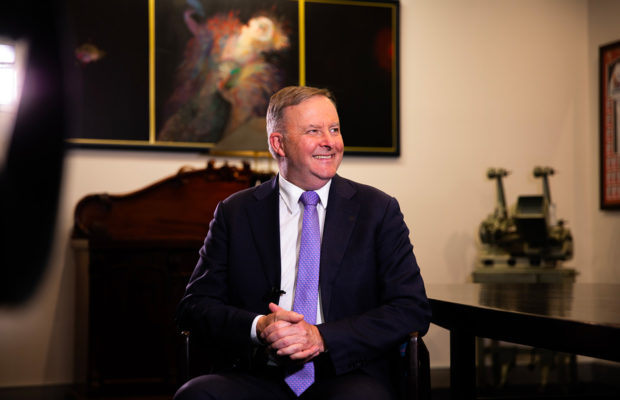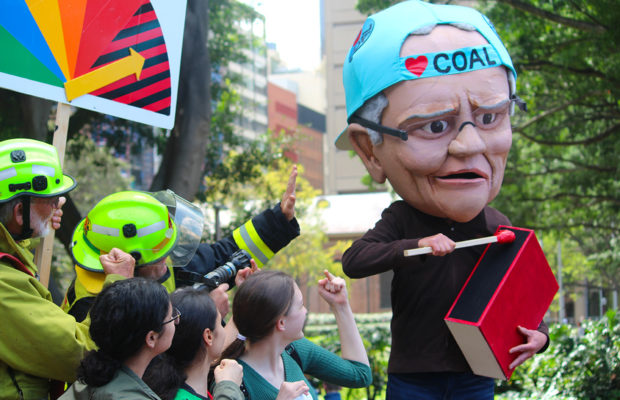Australia's Prime Minister, Liberal Scott Morrison, has called a federal election for 21 May. "ScoMo" and the Liberals were the surprise winners of the 2019 election and currently have a single seat majority in the 151-seat parliament. Opinion polls are favouring Labor and its leader Anthony Albanese over Morrison, who has been accused of bullying and a pitiful record on climate change. But the pollsters got it completely wrong three years ago. Can ScoMo come up with another miracle?
Australian politics is notoriously adversarial, and the first miracle of Morrison's premiership is that it reached its term. When he won the 2019 election, he was the sixth PM in six years. Both Labor and Liberal parties had ousted their own leaders from the Premiership. Morrison was briefly PM at the end of the previous government, having ousted Malcolm Turnbull as leader of the Liberals.

But Morrison has come in for a lot of criticism lately. His government managed to keep Australia relatively COVID-free, but long lockdowns and closed borders have inevitably affected the economy. His term has included record extreme weather events, including a second year of catastrophic flooding right now. Whether or not they consider these events to be the result of climate change, which the Liberals have done as little as possible to combat, many voters object to Morrison's handling of the disasters. Few have forgotten his holiday in Hawaii during the catastrophic 2019-2020 bushfires.
In the last days of the campaign, Morrison admitted at a press conference, "I can be a bit of a bulldozer." He promised, "As we go into this next period on the other side of this election, I know there are things that are going to have to change with the way I do things." But is it too little, too late?
The man polls are predicting will be the next Prime Minister is Labor's Anthony Albanese. He's been an MP for 25 years and leader of his party since 2019. He has styled himself as the representative of the average voter, making regular references to his childhood in low-income housing, the only child of a single mother on disability benefit.

For a long time, he was very much identified with the left wing of the Labor party, but since becoming leader he has moved towards the centre. Labor is still promising to improve gender equality, child and elderly care, but has shied away from environmental policies that go too strongly against the mining and other fossil-fuel industries that are major employers.
Both main parties seem to have spent infinitely more energy attacking their opponents in the campaign than making positive proposals. Just take a look at the Liberal and Labor Party YouTube channels and see how many of their campaign videos are attack ads on their opponents. Though the Liberals may have reached desperation level with their latest video, "1-Hour Guided Meditation for a Strong Economy and Stronger Future". When nothing else works, meditate?
Campaigning on the Climate
Fighting climate change is a big issue in the election, but one championed mainly by independent candidates. Despite devastating bush fires, floods and droughts in recent years, Scott Morrison is ebulliently pro-coal. His Liberal Party promises more of the same and Labor's Anthony Albanese has watered down his party's environmental promises.

According to the Australian Climate Council, "Australia is the sunniest country in the world and one of the windiest; it has enough renewable energy resources to power the country 500 times over." Yet the government's own figures say that renewables only make up 7% of the country's energy consumption.
But 22 independent candidates financed by a Melbourne philanthropist and crowdfunding are pushing for much more ambitious action to limit carbon emissions.
Climate200, founded by entrepreneur and philanthropist Simon Holmes à Court, believes that independent candidates, along with any Green party MPs, could force a coalition government. And their demand in exchange for supporting a government party would be much more ambitious environmental targets. Australia lagged behind other countries at COP26 in promises to cut carbon emissions. It only committed to reduce emissions by 26% on 2005 levels by 2030, with a pledge of net zero emissions by 2050. The independent candidates are pushing for a 75% cut by 2030, and net zero by 2035.
Compulsory voting
Australia is one of only about 20 countries around the world where voting is compulsory. Failure to make an appearance at a polling booth carries a 20AUSD fine, which doesn't seem especially dissuasive, but the proof of the pudding is in the eating: Australian elections regularly have 90% or above turnout. The policy, in place since 1924, is so ingrained that most citizens are happy to go along with it.
In this very clear short video from the BBC, Judith Brett, an Australian political historian, explains the system and argues that it tends to more moderation in politics, saying that in countries where voting is optional, parties and candidates have to up the ante to motivate voters to come out and vote.
 Find out more on environmental threats and conservation in Australia in Shine Bright AMC SnapFile 20 The bush is burning.
Find out more on environmental threats and conservation in Australia in Shine Bright AMC SnapFile 20 The bush is burning.
Copyright(s) :
Liberal Party of Australia
Labor Party of Australia
Rose Makin/Shutterstock
> Australian Election Turnaround
> Koalas in Danger
> Change in Australia’s National Anthem to Reflect Indigenous Heritage
> Australia
> School of the Air in Australia
> Indigenous Rap: Young Australian of the Year
Tag(s) : "Australia" "Australian politics" "citizenship" "climate change" "compulsory voting" "conservation" "elections" "Scott Morrison" "Shine Bright AMC" "wildfire"





